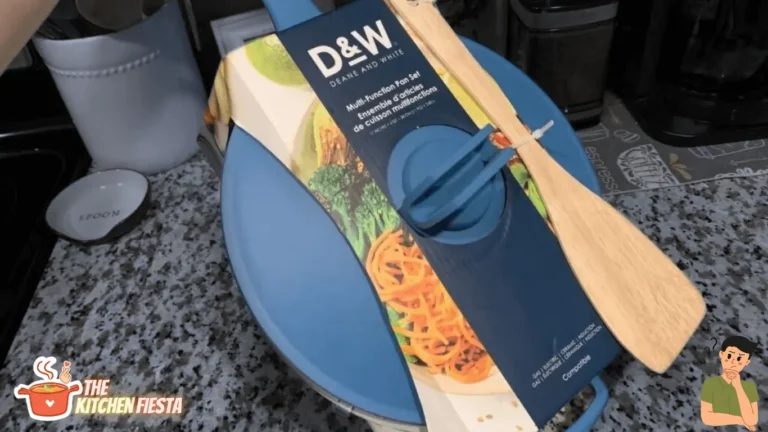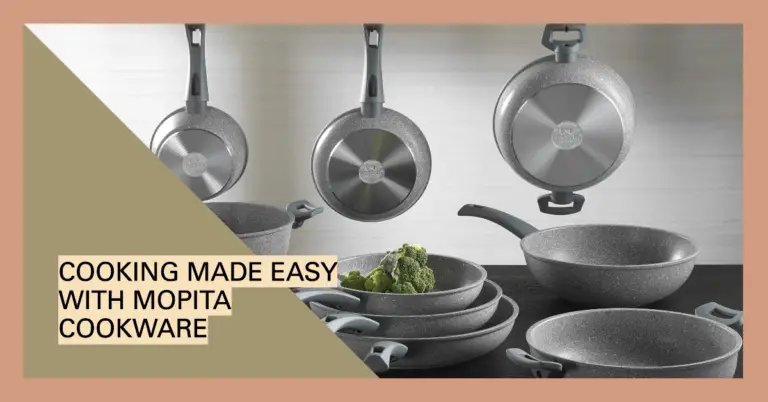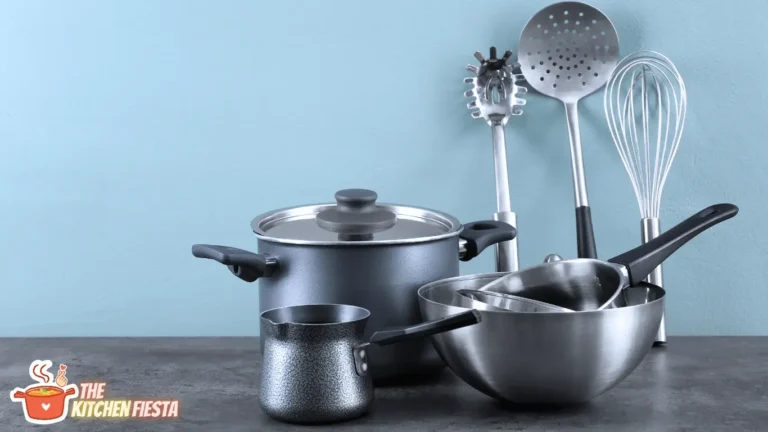How To Use Parini Cookware? A Beginner’s Guide
Have you recently purchased a set of Parini cookware and aren’t sure how to make the most of it? As a leading manufacturer of high-quality stainless steel and ceramic cookware, Parini offers exceptional performance and durability. This guide will teach you how to properly use, care for, and cook amazing recipes with Parini pots and pans.
An Introduction to Parini Cookware
Parini cookware sets are an investment that will serve you well for years to come. Founded in Italy, Parini uses innovative materials and designs to create versatile and durable pots and pans. Their cookware evenly distributes heat, resists warping, and makes cooking easy.
Parini offers cookware made from:
- Stainless steel – Durable, non-reactive, and oven safe. The aluminum core ensures even, quick heating.
- Ceramic non-stick – Naturally non-stick and scratch resistant. Free of harmful chemicals found in other non-sticks.
- Hard anodized aluminum – Heats rapidly and evenly. Resistant to corrosion and scratching.
- Copper – Excellent heat conduction but requires more maintenance.
No matter which you choose, Parini cookware makes cooking easier with features like:
- Ergonomic handles – Stay cool and provide a secure grip.
- Tempered glass lids – Seal in moisture and nutrients without cracking. The glass allows monitoring food easily.
- Vented lids – Prevent boiling over or splattering.
- Pour spouts – Neatly pour out liquids without spilling.
- Helpers handles – Provide extra grip and control when lifting and moving full pots.
Parini offers all the pans you need for everyday cooking and more:
- Skillets/frying pans – Available in 8, 10, and 12 inches. Great for sautéing, searing, frying.
- Saucepans – From 1 to 4 quarts. Ideal for simmering sauces, grains, soups.
- Sauté pans – Similar to skillets but with straight sides. Good for braising meats.
- Stockpots – Large pots up to 12 quarts. Perfect for boiling pasta, making stock.
- Grill pans – Ribbed pans for getting grill marks on meats and veggies.
- Woks – Deep sloped sides to toss and stir-fry ingredients.
- Roasting pans – Large pans with racks for roasting meat and veggies.
Now let’s go over how to properly season, use, and care for your new Parini pots and pans.
Seasoning Parini Cookware
Seasoning your pans before the first use will protect them and enhance non-stick performance.
For stainless steel:
- Wash with hot soapy water and dry thoroughly.
- Coat the interior with a thin layer of cooking oil. Use a paper towel to rub it all over the cooking surface.
- Heat the pan on medium heat for 2-3 minutes until the oil starts smoking lightly.
- Allow to cool completely and repeat the oiling and heating process 2-3 more times.
- The pan exterior can also be seasoned by applying oil and heating the pan upside down.
For ceramic non-stick:
- Wash gently with dish soap and warm water. Avoid abrasives.
- Rub cooking oil all over the interior and exterior.
- Heat on low for 10 minutes to seal and harden the oil.
- Let cool fully before using. Higher initial heat can damage ceramic coatings.
Proper seasoning creates a natural non-stick surface and prevents food from sticking.
Caring for Parini Pots and Pans
Follow these tips to keep Parini cookware performing like new:
Cleaning
- Allow pans to cool fully before cleaning to prevent warping.
- Stainless steel and anodized aluminum can be washed by hand or dishwasher.
- For ceramic non-stick, hand wash gently with dish soap and soft sponge or cloth. Avoid abrasive scrubbers.
- Rinse away any soap residue and dry immediately to prevent spots.
Storing
- Avoid stacking pans directly inside one another. Use parchment rounds between pans to prevent scratching.
- Store cookware in a cabinet, not under the sink or oven where moisture can damage it.
- Hang pans using hooks to maximize storage space.
General Use
- Allow pans to heat gradually to avoid warping and buckling.
- Use medium heat for most cooking. High heat should only be used for boiling water or searing.
- Don’t drag or slide pans across the stove. Always lift and place carefully.
- Let pans cool on the stove before rinsing to prevent cracking from temperature shock.
- Only use nylon, silicone or wooden utensils to avoid scratching.
By caring for Parini cookware properly, it will provide many years of cooking performance.
Heating Tips for Parini Cookware
Learning how Parini cookware heats will help you become an expert at cooking with it. Follow these heating tips:
- Parini stainless steel and anodized aluminum heat quickly and evenly across the base and up the sides.
- Bring pans to temperature gradually over medium heat to prevent hot spots.
- Once hot, turn heat to low or medium-low to maintain the desired temperature.
- For non-stick ceramic, use only low to medium heat to protect the coating. High heat can damage it.
- Match the pan size to the amount of food. Overcrowding can cause food to steam vs. brown evenly.
- Use lids to accelerate cooking but monitor closely. The retained heat and steam cooks food faster.
- On gas stoves, ensure the flame fully reaches the base without wrapping up the sides. Flames extending up the pan sides can lead to uneven heating.
- Electric and induction stoves heat the pan base evenly without hotter perimeters.
Now that you know how Parini cookware heats, let’s go over how to cook different types of food.
Cooking Different Foods in Parini Pots and Pans
Parini cookware allows you to prepare all of your favorite recipes with ease. Here are tips for cooking foods like meats, eggs, and more:
Meats:
- Pat meats dry before searing to help them brown and not steam. Season just before cooking.
- Use a hot skillet or grill pan and flip meat only once during cooking. Too much flipping slows browning.
- Sear meat first on the stovetop before braising or roasting in the oven.
- Deglaze the pan after searing by adding wine or broth. This loosens the fond (browned bits) creating an instant sauce.
- Let meat rest 5-10 minutes before slicing to retain juices.
Seafood:
- Pat fish and shellfish dry. Season right before cooking.
- Use a hot skillet/sauté pan lightly coated in oil. Do not move seafood until it releases naturally.
- Cook fish until it flakes easily and is opaque throughout. Shrimp will become pink and curled.
- Add acidic ingredients like lemon or tomatoes at the end to prevent toughening seafood.
- Let seafood rest 2-3 minutes after cooking.
Eggs:
- Use low to medium heat for eggs to prevent scorching and sticking.
- Coat the pan in butter or oil before adding eggs for best release.
- Scrambled eggs and omelets should be constantly stirred or moved as they cook.
- Fry eggs in butter and frequently baste the tops with hot butter for baveuse-style eggs.
Vegetables:
- Many vegetables can be roasted in Parini pans at high heat to caramelize flavors. Toss first in oil.
- For pan frying, cook veggies in batches if needed to avoid steaming. Keep heat relatively high.
- Add hearty veggies like carrots early when stir-frying. Add quick cooking ones like greens at the end.
- Steam veggies using a saucepan, steamer basket and lid. Keep an eye on water level.
Grains and beans:
- Rinse grains like rice and quinoa before cooking for best results.
- Toast grains first in oil briefly before adding cooking liquid for enhanced texture and flavor.
- Simmer gently in a saucepan until liquid is absorbed and grains are tender.
- For beans, always soak first before simmering until tender. Discard soaking water which can cause gas.
With the right techniques, Parini cookware makes cooking all foods easy and enjoyable. Now let’s go over how to clean and care for your cookware.
Cleaning and Caring for Parini Pots and Pans
Maintaining Parini cookware properly ensures it lasts for many meals to come. Here are tips for cleaning each material:
Stainless Steel
- Let pans cool before washing or risk warping from temperature shocks.
- Soak any stuck on food residue in warm soapy water before scrubbing. Avoid abrasives.
- Use a non-scratch sponge or soft brush in the direction of the grain lines.
- Rinse and dry thoroughly. Can be washed in the dishwasher.
Ceramic Non-Stick
- Allow to cool completely before cleaning.
- Gently wash by hand with warm soapy water and soft sponge or cloth. Do not use abrasive scrubbers.
- If food residue remains, fill with hot water and let soak before gently scrubbing.
- Dry immediately and thoroughly. Do not place ceramic non-stick in the dishwasher.
Anodized Aluminum
- Residue should soak for at least 15 minutes before scrubbing if burnt on. Use baking soda or non-abrasive cleanser to help remove stubborn residue.
- Scrub gently in direction of grain lines with a sponge or soft brush.
- Rinse and dry thoroughly. These are generally dishwasher safe but hand washing extends the life.
Copper
- Must be washed by hand since copper is reactive. Use mild dish soap and soft sponge.
- To remove residue, sprinkle salt and rub with lemon halves. Rinse and dry immediately.
- Polish regularly with copper polish to prevent oxidation and keep the bright finish.
For All Parini Cookware:
- Check undersides of pans for debris that can scratch or burn next use.
- Ensure cookware is fully dried. Leftover water droplets can damage over time.
- Apply a light coating of oil occasionally to re-season and protect the cooking surface.
By caring for Parini cookware properly after each use, it will last for decades.
Tips for Cooking Classic Recipes with Parini
Parini cookware is perfect for cooking delicious classic recipes. Here are tips for making the most of your Parini pans:
Pasta Bolognese
- Use a 3-4 quart saucepan. Brown the ground meat well before adding tomatoes and simmering.
- The aluminum core and stainless sides distribute heat evenly when simmering for hours.
- Add cream at the end since high heat can cause it to curdle or separate.
Chili
- Sauté aromatics like onion, peppers, and garlic in a skillet first.
- Transfer to a stockpot and add meat and remaining ingredients. The wider base helps prevent sticking.
- Simmer chili uncovered for thickening. The vented lid still retains some moisture.
Stews and Soups
- Cook meats, veggies, and potatoes in batches in a skillet if needed before transferring to the stockpot or dutch oven.
- The multipurpose stockpot is great for simmering broths, chilis, chowders, and more.
- Use a slotted spoon to transfer solids when ready before adjusting and seasoning the broth.
Pan Sauces
- Prepare pan sauces right in the same skillet used to cook meats.
- Deglaze the pan with wine or broth, using a wooden spoon to loosen the flavorful browned bits.
- Reduce until thickened and glossy before swirling in butter at the end.
Omelets
- Ensure eggs are at room temperature before whisking vigorously with milk or cream for a tender, fluffy omelet.
- Cook over medium-low heat, stirring continuously as it sets to create small, soft curds.
- Let set briefly before folding and sliding onto a plate. The non-stick surface makes this easy.
Vegetable Stir Fry
- Heat 1-2 Tbsp oil in a wok or large skillet over high heat. Parini distributes and maintains heat evenly when stir-frying.
- Cook meat in batches if using and remove from pan. Then cook harder veggies before adding softer ones like leafy greens.
- Return meat and stir sauce ingredients until slightly thickened. Serve immediately over rice.
With the right techniques, Parini cookware can help you cook amazing classic recipes with ease.
Conclusion
From simmering sauces to frying eggs, Parini cookware is designed for effortless everyday cooking. By seasoning properly before use and caring for your pots and pans after each meal, this high quality cookware will deliver delicious results for years. Use lower heats for the best performance, allow pans to heat gradually, and avoid abrasives when cleaning. With Parini by your side in the kitchen, you can confidently cook all of your family favorites.




